hibiscus tea recipe
Everything you want to know about hibiscus
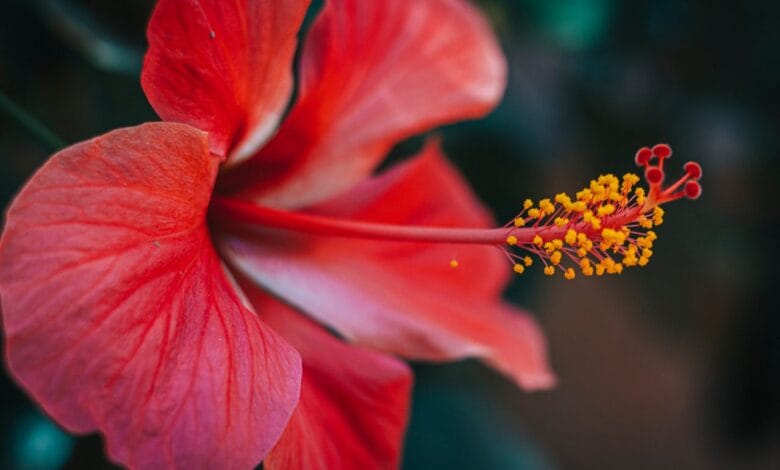
hibiscus tea recipe: The vibrant red hibiscus flower not only provides us with a refreshing and delightful beverage but also boasts a wide range of applications. From traditional medicine and the food industry to cosmetics and ornamental uses, hibiscus is a versatile ingredient known for its numerous health benefits. Historically, hibiscus has been recognized for its therapeutic properties, including its ability to lower blood pressure, boost the immune system, and enhance liver health.
In this article, we will explore the various health benefits of hibiscus, its diverse applications, potential side effects, and tips for using it safely and effectively.
Organic hibiscus tea
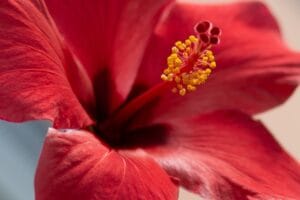
Organic hibiscus tea, made from the dried petals of the hibiscus flower, is a natural, refreshing beverage known for its vibrant color, tangy flavor, and impressive health benefits. This tea is not only a delightful drink but also a powerhouse of nutrients, offering a range of therapeutic properties.
Hibiscus, a vibrant and versatile plant, originates from the tropical and subtropical regions of Africa and Asia, with its believed homeland being West Africa. The oldest records of its use are found there, from where it gradually spread to other parts of Africa, then to Asia, the Middle East, and Europe.
By the 17th century, hibiscus had made its way to Europe, where it gained popularity as a refreshing beverage. During the 19th century, its cultivation spread to various European countries, including France, Italy, and Spain. Today, hibiscus continues to be cherished globally for its myriad uses and health benefits.
Types of hibiscus
Hibiscus, the bright red flower that offers us a refreshing and delightful beverage, comes in several types, each varying in color, shape, and use. Firstly, let’s explore the most common types of hibiscus:
Red Hibiscus (Hibiscus sabdariffa): This is the most popular variety and is primarily used to make hibiscus tea. Notably, it is known for its deep red color and large flowers. Moreover, its tart flavor and rich hue make it a favorite for preparing the traditional hibiscus drink.
Chinese Hibiscus (Hibiscus rosa-sinensis): In contrast, this type is characterized by its large, colorful flowers, which can be red, pink, white, or yellow. Primarily, it is used for ornamental purposes. Consequently, its striking appearance makes it a popular choice for garden decorations.
Syrian Hibiscus (Hibiscus syriacus): Similarly, known for its large blue or purple flowers, this variety is also used primarily for ornamental purposes. Thus, it adds a touch of beauty to gardens and landscapes with its vibrant blooms.
Swamp Hibiscus (Hibiscus moscheutos): Additionally, this variety features large white or pink flowers and is used for ornamental purposes as well. Furthermore, it thrives in wet conditions and adds elegance to water gardens and moist landscapes.
Three-leaf Hibiscus (Hibiscus trionum): Finally, recognized by its small yellow flowers, this type is often used as a ground cover in gardens. Therefore, its compact growth and cheerful blooms make it a useful addition to garden beds and borders.
Each type of hibiscus brings its own unique charm and functionality, whether for medicinal use, culinary applications, or decorative purposes.
Best hibiscus tea
Hibiscus tea is a popular herbal infusion cherished for its vibrant color, tangy flavor, and numerous health benefits. When selecting the best hibiscus tea, it’s important to consider factors such as quality, sourcing, and flavor profile. Here are some top choices that stand out in terms of flavor and benefits:
1. Celestial Seasonings Hibiscus Tea
- Features: A well-known brand offering a smooth, tart flavor with a bright red hue. It’s often blended with other herbal ingredients for a more complex taste.
- Benefits: Rich in antioxidants, caffeine-free, and known for its potential to help lower blood pressure.
- Best For: Those seeking a reliable, widely available option with a balanced flavor.
2. Traditional Medicinals Organic Hibiscus Tea
- Features: Made from organic hibiscus flowers, this tea offers a pure and robust flavor. It is certified organic and non-GMO.
- Benefits: Supports cardiovascular health and has a high antioxidant content. The organic certification ensures no pesticides or synthetic fertilizers.
- Best For: Health-conscious consumers looking for an organic and natural option.
3. Yogi Tea Hibiscus Immune Support
- Features: Combines hibiscus with elderflower and other immune-supporting herbs. The tea has a refreshing, slightly tangy taste.
- Benefits: Designed to boost the immune system, rich in antioxidants, and supports overall well-being.
- Best For: Those interested in an immune-boosting blend with additional herbal benefits.
4. Harney & Sons Hibiscus Tea
- Features: Known for its high-quality ingredients and sophisticated flavor profile. The tea has a deep red color and a tart, fruity taste.
- Benefits: Provides a rich, full flavor experience with the benefits of antioxidants and potential blood pressure regulation.
- Best For: Tea connoisseurs who appreciate premium quality and a refined taste.
5. Teavana Hibiscus Bliss
- Features: A blend of hibiscus with tropical fruits like pineapple and mango, offering a fruity and tangy flavor.
- Benefits: Combines the health benefits of hibiscus with the flavors of tropical fruit, making it a refreshing and enjoyable choice.
- Best For: Those looking for a flavorful, fruity twist on traditional hibiscus tea.
6. The Republic of Tea Hibiscus Sangria
- Features: Infused with flavors reminiscent of sangria, this tea blends hibiscus with fruit and spice notes.
- Benefits: Provides the antioxidant benefits of hibiscus with a unique and refreshing flavor profile.
- Best For: Fans of fruity and spiced teas looking for a fun twist on hibiscus.
Tips for Choosing the Best Hibiscus Tea:
- Check the Ingredients: Look for teas with high-quality, pure hibiscus flowers. Avoid products with artificial additives or excessive sweeteners.
- Consider Organic Options: Organic hibiscus tea ensures that the flowers are grown without pesticides or synthetic chemicals.
- Read Reviews: Customer reviews can provide insights into the flavor, quality, and overall satisfaction with the tea.
By considering these top choices and tips, you can find the best hibiscus tea to suit your taste preferences and health needs.
Benefits of hibiscus
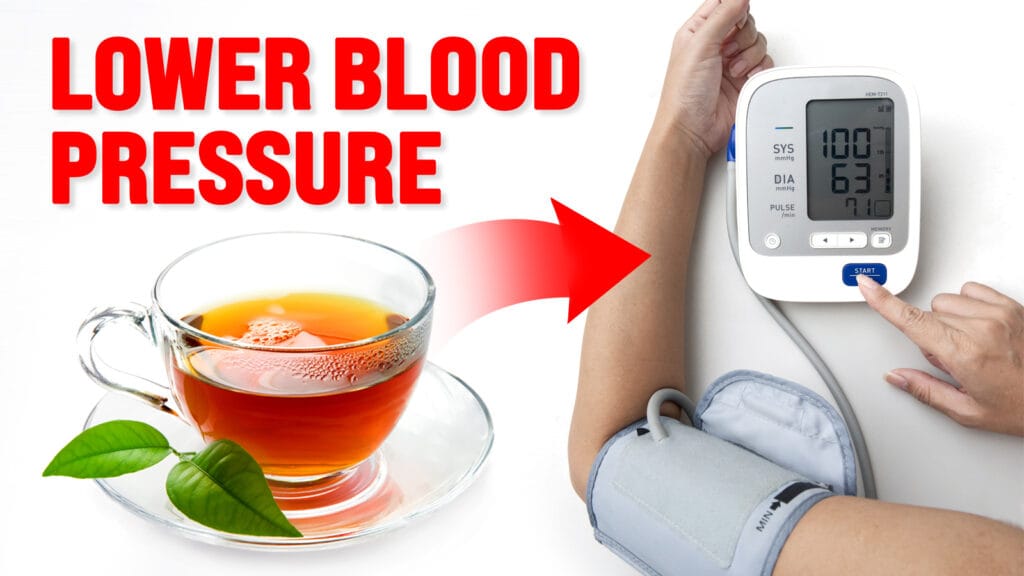
Hibiscus tea offers a range of impressive health benefits, including its ability to lower blood pressure, thanks to its natural compounds that promote cardiovascular health. Rich in antioxidants and vitamin C, it helps combat oxidative stress, supports immune function, and boosts collagen production for healthier skin. Additionally, hibiscus tea aids in digestion, provides anti-inflammatory effects, and can be a refreshing, caffeine-free alternative to other beverages. Its natural acidity and tart flavor make it a versatile choice for promoting overall well-being.
Hibiscus tea benefits skin
Hibiscus tea is not only celebrated for its refreshing taste and health benefits but also for its positive effects on the skin. Packed with antioxidants, vitamins, and natural acids, hibiscus tea can contribute to various aspects of skin health. Here’s how hibiscus tea benefits the skin:
1. Rich in Antioxidants
Hibiscus tea is loaded with antioxidants, particularly anthocyanins and vitamin C. These antioxidants help neutralize free radicals, which can damage skin cells and accelerate aging. By combating oxidative stress, hibiscus tea helps maintain a youthful and radiant complexion.
2. Supports Collagen Production
The high vitamin C content in hibiscus tea plays a crucial role in collagen synthesis. Collagen is a protein that provides structure and elasticity to the skin. Adequate vitamin C helps in maintaining skin firmness and reducing the appearance of fine lines and wrinkles.
3. Promotes Skin Hydration
Hibiscus tea has natural mucilage, which can help keep the skin hydrated. Proper hydration is essential for maintaining skin elasticity and preventing dryness, leading to a healthier and more supple appearance.
4. Exfoliates and Refreshes
Hibiscus tea contains natural alpha-hydroxy acids (AHAs) like citric acid and malic acid. These acids gently exfoliate the skin, removing dead skin cells and promoting cell turnover. Regular exfoliation helps in achieving a smoother texture and a more even skin tone.
5. Reduces Inflammation
The anti-inflammatory properties of hibiscus tea can help soothe irritated skin and reduce redness and swelling. This makes it beneficial for those with inflammatory skin conditions like acne or rosacea.
6. Balances Skin Tone
The antioxidants and vitamins in hibiscus tea can help in reducing hyperpigmentation and dark spots. Regular consumption may contribute to a more even skin tone and a brighter complexion.
7. Fights Acne
Hibiscus tea’s natural antibacterial properties help in controlling acne-causing bacteria. Additionally, its ability to regulate oil production and reduce inflammation can help prevent and manage acne breakouts.
How to Incorporate Hibiscus Tea for Skin Benefits
- Drinking Hibiscus Tea: Regularly drinking hibiscus tea helps in providing your body with essential antioxidants and vitamins that promote skin health from within.
- Topical Application: You can use cooled hibiscus tea as a facial toner or a compress. Soak a cotton pad in the tea and apply it to your face to refresh and soothe the skin.
- DIY Face Masks: Mix hibiscus tea with other natural ingredients like honey or yogurt to create a nourishing face mask. This combination can provide exfoliation, hydration, and a boost of antioxidants.
- Hydrating Spritz: Prepare a hibiscus tea and store it in a spray bottle. Use it as a refreshing facial mist throughout the day to keep your skin hydrated and invigorated.
Precautions
- Allergies: Ensure you are not allergic to hibiscus by doing a patch test before using it topically.
- Sensitivity: If you have sensitive skin, start with a diluted version of hibiscus tea or consult a dermatologist before regular use.
By incorporating hibiscus tea into your routine, you can harness its numerous skin benefits and achieve a healthier, more radiant complexion.
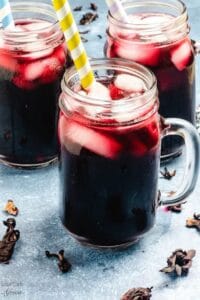
How to make hibiscus tea
Hibiscus tea, known for its vibrant red color and tangy flavor, is easy to prepare and offers numerous health benefits. Here’s a step-by-step guide on how to make it:
Ingredients
- Dried hibiscus flowers: 2-3 teaspoons or 1 tablespoon (if using loose hibiscus petals) or 1 hibiscus tea bag
- Water: 2 cups
- Optional add-ins: Sweeteners (honey, sugar, or agave syrup), lemon slices, mint leaves, or other herbs and spices for added flavor
Instructions
- Boil Water:
- Start by bringing 2 cups of water to a boil. Use a kettle or a pot on the stove.
- Add Hibiscus Flowers:
- If using dried hibiscus flowers: Place 2-3 teaspoons of dried hibiscus petals into a heat-resistant teapot or bowl. You can also use a tea infuser for easier straining.
- If using a tea bag: Simply place the tea bag into your teapot or cup.
- Pour Water Over Hibiscus:
- Pour the boiling water over the dried hibiscus flowers or tea bag. Make sure the flowers or tea bag are fully submerged.
- Steep the Tea:
- Allow the tea to steep for 5-10 minutes. The longer it steeps, the more robust and tangy the flavor will be. For a milder taste, steep for a shorter time.
- Strain the Tea:
- If you used loose hibiscus petals, strain the tea into another cup or pot using a fine-mesh strainer to remove the petals. If you used a tea bag, simply remove and discard it.
- Add Optional Ingredients:
- If desired, sweeten the tea with honey, sugar, or agave syrup. You can also add a squeeze of lemon juice, a slice of lemon, or a few fresh mint leaves for extra flavor.
- Serve:
- Serve the tea hot or let it cool to room temperature. Hibiscus tea can also be enjoyed iced. To make iced hibiscus tea, let the brewed tea cool completely, then refrigerate and serve over ice.
Tips
- Adjusting Strength: For a stronger flavor, use more dried hibiscus petals or steep the tea longer. For a lighter flavor, reduce the amount of hibiscus or steep for a shorter time.
- Experiment with Flavors: Try adding a cinnamon stick, a few cloves, or a splash of fruit juice for a unique twist on traditional hibiscus tea.
- Storage: Store any leftover tea in the refrigerator for up to 3 days. It can also be used as a base for iced tea or mixed into smoothies.
Enjoying a cup of homemade hibiscus tea is a delightful way to refresh yourself while benefiting from its rich flavor and potential health benefits.
Best time to drink hibiscus tea
Hibiscus tea is a versatile beverage that can be enjoyed at various times of the day, depending on your personal preferences and health goals. Here’s a guide on the best times to drink hibiscus tea to maximize its benefits and make the most of its flavor:
1. In the Morning
- Why: Starting your day with hibiscus tea can be invigorating and hydrating. Its natural acidity and antioxidant properties can help wake you up and refresh your system.
- Benefits: The vitamin C and antioxidants can boost your immune system and provide a gentle start to your day. It’s a great alternative to coffee or black tea for those who prefer a caffeine-free option.
2. Before or After Meals
- Before Meals: Drinking hibiscus tea about 30 minutes before a meal may help stimulate digestion and enhance appetite.
- After Meals: Having hibiscus tea after meals can aid in digestion and reduce bloating. Its natural acids help break down food and promote a sense of fullness.
3. In the Afternoon
- Why: Hibiscus tea can serve as a refreshing and energizing afternoon pick-me-up. Its tart flavor can be a pleasant change from typical afternoon snacks and beverages.
- Benefits: It can help stabilize your blood sugar levels, making it a good option for those looking to manage their energy levels and prevent afternoon slumps.
4. In the Evening
- Why: Hibiscus tea is naturally caffeine-free, making it an excellent choice for winding down in the evening. It can be part of your evening routine to help relax before bed.
- Benefits: Drinking hibiscus tea in the evening may help lower blood pressure and promote relaxation. Its soothing properties can contribute to a calm and restful night’s sleep.
5. As a Cold Beverage
- Why: Hibiscus tea can be enjoyed iced, making it a great option for hydration during hot weather or after exercise.
- Benefits: Iced hibiscus tea is refreshing and can help replenish fluids and electrolytes. It’s a healthy alternative to sugary drinks and sodas.
Considerations
- Health Conditions: If you have specific health conditions or are taking medication, it’s important to consult with a healthcare provider about the best time to drink hibiscus tea. For example, if you are on blood pressure medication, timing and quantity may need to be adjusted.
- Personal Preference: Ultimately, the best time to drink hibiscus tea is when it fits best into your routine and preferences. Whether you enjoy it in the morning, afternoon, or evening, the key is to integrate it in a way that enhances your overall well-being.
By considering these timing options and benefits, you can enjoy hibiscus tea in a way that aligns with your lifestyle and health goals.
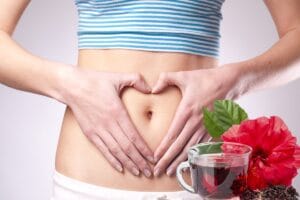
Hibiscus tea side effects
While hibiscus tea is widely celebrated for its numerous health benefits, it is important to be aware of potential side effects and precautions. Here’s a comprehensive look at possible side effects and considerations when drinking hibiscus tea:
1. Drop in Blood Pressure
- Description: Hibiscus tea is known for its potential to lower blood pressure. While this can be beneficial for those with high blood pressure, it may cause issues for individuals with already low blood pressure or those on medication for hypertension.
- Precaution: Monitor your blood pressure regularly and consult with a healthcare provider if you experience symptoms like dizziness or fainting. If you are on blood pressure medication, check with your doctor before incorporating hibiscus tea into your routine.
2. Allergic Reactions
- Description: Although rare, some people may experience allergic reactions to hibiscus. Symptoms could include itching, rash, or swelling.
- Precaution: If you have a known allergy to hibiscus or similar plants, avoid drinking the tea. If you experience any signs of an allergic reaction, discontinue use and seek medical advice.
3. Interference with Medications
- Description: Hibiscus tea may interact with certain medications, including those for high blood pressure, diabetes, and hormone-related treatments. It may affect how these medications are absorbed or metabolized.
- Precaution: If you are taking any medications, particularly those for managing blood pressure or diabetes, consult with your healthcare provider to ensure there are no potential interactions.
4. Potential for Liver Effects
- Description: There is some evidence suggesting that excessive consumption of hibiscus tea could potentially affect liver function, although this is typically related to very high doses or prolonged use.
- Precaution: Stick to moderate consumption and consult with a healthcare provider if you have liver conditions or concerns.
5. Pregnancy and Menstruation Concerns
- Description: Some studies suggest that hibiscus tea might affect menstrual flow or uterine contractions, which could be a concern during pregnancy or menstruation.
- Precaution: Pregnant or breastfeeding women should consult with their healthcare provider before consuming hibiscus tea. If you have heavy menstrual bleeding or other related concerns, discuss this with your doctor.
6. Blood Sugar Levels
- Description: Hibiscus tea may have an impact on blood sugar levels. While it might be beneficial for some people with diabetes, it could potentially cause fluctuations in blood sugar levels.
- Precaution: Diabetics should monitor their blood sugar levels closely and consult with a healthcare provider before making hibiscus tea a regular part of their diet.
7. Digestive Issues
- Description: In some cases, consuming large amounts of hibiscus tea may cause mild digestive issues, such as stomach upset or diarrhea.
- Precaution: Stick to recommended servings (usually 1-2 cups per day) and adjust consumption based on your digestive tolerance.
General Recommendations
- Moderation: As with any herbal tea, moderation is key. Generally, 1-2 cups of hibiscus tea per day are considered safe for most people.
- Consultation: If you have existing health conditions, are pregnant, or are on medication, it’s best to consult with your healthcare provider before incorporating hibiscus tea into your diet.
By understanding these potential side effects and taking appropriate precautions, you can enjoy the benefits of hibiscus tea while minimizing any risks.
Read more
